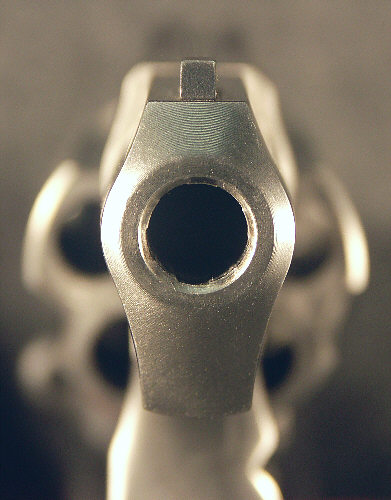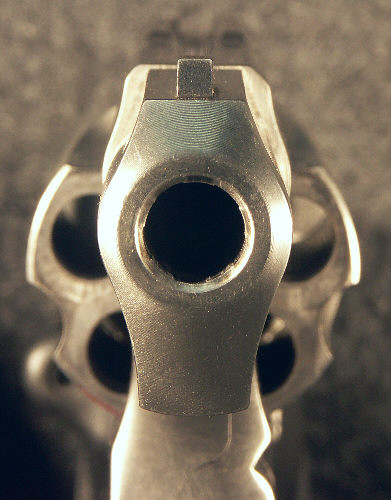If
java disabled or no main menu showing above - use links
below.
|
We have looked at the
''mechanics'' of depth of field on the Photofacts
page, but it seems as though some examples might
be useful, to better highlight the facts.
Below are two photographs of my SP-101 from the muzzle....
they were taken using tungsten lighting and color balance
is not quite ideal but this makes no difference to the
demonstration of depth of field. Camera was tripod mounted. |
Fast shutter speed
- large aperture -
Here, we have taken the shot of the gun muzzle at
1/100 sec and the aperture open at maximum ... in
this case f3.5. remember, a large aperture is NOT
conducive to good depth of field, but here perhaps,
maybe we might imagine that we had to hand hold
the camera and so reduce camera shake by having
a faster shutter speed.
Note however, that whilst the muzzle is pretty clear
and sharp ... the cylinder in the background is
very out of focus, somewhat of a ''ghost'' presence.
This might sometimes matter.

|
|
Slow shutter speed
and small aperture -
Now, same gun, same camera position but we have reversed
the priorities. We have a slow shutter speed of 1/10
sec and the smallest aperture the camera supports,
which is f11. Perfectly feasable if a tripod is to
hand.
Notice the difference! Once more, the muzzle is quite
sharp but, now we are able to pick out more detail
of the cylinder. Agreed, that is not totally sharp
but considering the close-up nature of this shot,
that is quite some improvement, and it might be required
to show better detail sometimes like this.

|
|
Hope
this helps a bit, if you have not so far quite grasped
what depth of field is all about. Nothing like an
image example to make a better point.
|

|
Back to Top
|

